When you’re first starting out on your software engineer career path, it’s common to assume that the overall direction will be linear. However, that isn’t the case. Instead, you can take your career in a multitude of exciting directions, allowing you to focus on specific skill areas or interests, and leading to a career that’s uniquely yours.
Cultivating your personal software engineering career path is far simpler if you know which options are available. That ensures you find the perfect fit, leading to higher job satisfaction and greater success. If you aren’t sure which options are on the table, take an in-depth look at the following nine directions.
make your way up!
Get the support to achieve career heights in tech. Send your CV and our team will find a perfect job-match for your leadership skills.
The complete career path for a software developer
The career path for a software developer can be incredibly varied. As a result, there are many software engineer jobs that could potentially meet your needs.
There are several types of software engineers, each representing unique specializations that you may want to explore. Along with frontend and backend developers, there are full-stack developers that handle both of those areas. Additionally, mobile developers focus on smartphone, tablet, and similar applications, often using specific languages and skills.
Even a straightforward software engineering career path creates opportunities for specialization. As a result, it’s easy to cultivate the best possible professional journey for you.
At EPAM Anywhere, I found so many opportunities to grow within multiple directions. I started as a React Native developer but now I’m getting more interested in backend development with Java, and I have this chance to develop these skills.

Generally speaking, all software engineers typically move through four core stages, including:
- Junior
- Mid-level
- Senior
- Lead
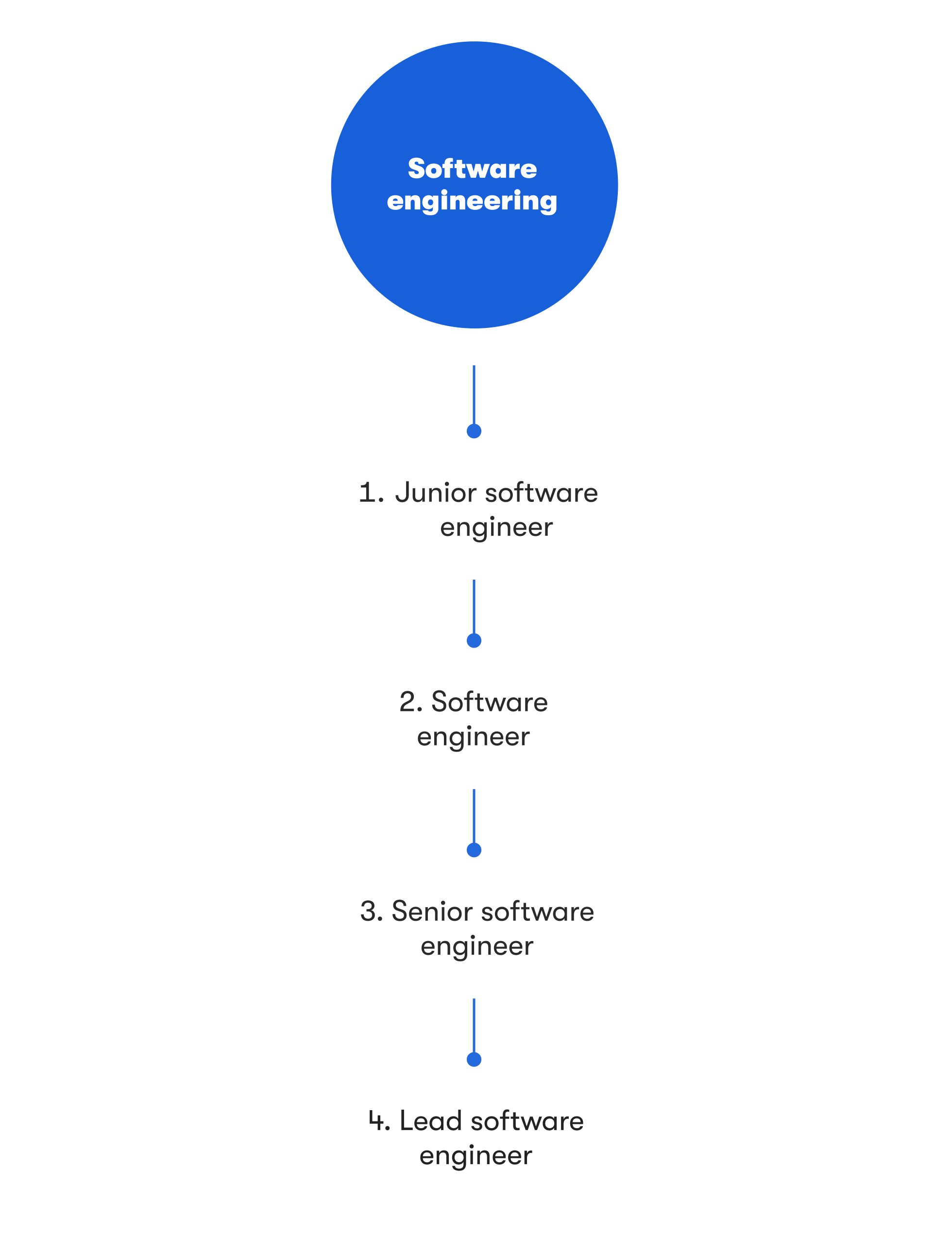
The junior level represents near entry-level positions in the field. Often, professionals in these positions are recent graduates with limited on-the-job experience. In a junior software engineering role, the focus is on the fundamentals of development, including core languages, frameworks, and overall design. Additionally, they’re often subject to the most oversight, ensuring they can receive constructive feedback to hone their skills.
At the mid-level, software engineers have enough experience to secure more autonomy on the job. They’re familiar with project advancement and can handle typical tasks without much direct oversight. In some cases, they may even play a critical part in planning projects, but they aren’t fully designing solutions, remaining in a more teamwork-oriented role instead of functioning in a leadership capacity.
One of the more advanced positions is senior software engineer. At this level, professionals can often conceive, design, and complete projects without direct guidance from higher-level supervisors or managers. Usually, their skills aren’t just solid but also proven, as they have significant experience in the field.
In a lead developer position, professionals are akin to supervisors. Along with handling project-related tasks, they often guide the work of others, delegate responsibilities, and serve as a liaison between staff members and management.
However, there’s also an advanced software engineer career track that goes beyond the stages above. Often, this serves as a middle ground between being an advanced individual contributor and shifting into managerial roles.
Generally, the advanced software engineering track is broken down into four stages: chief, associate principal, principal, and distinguished. Each represents elevated understanding and capabilities.
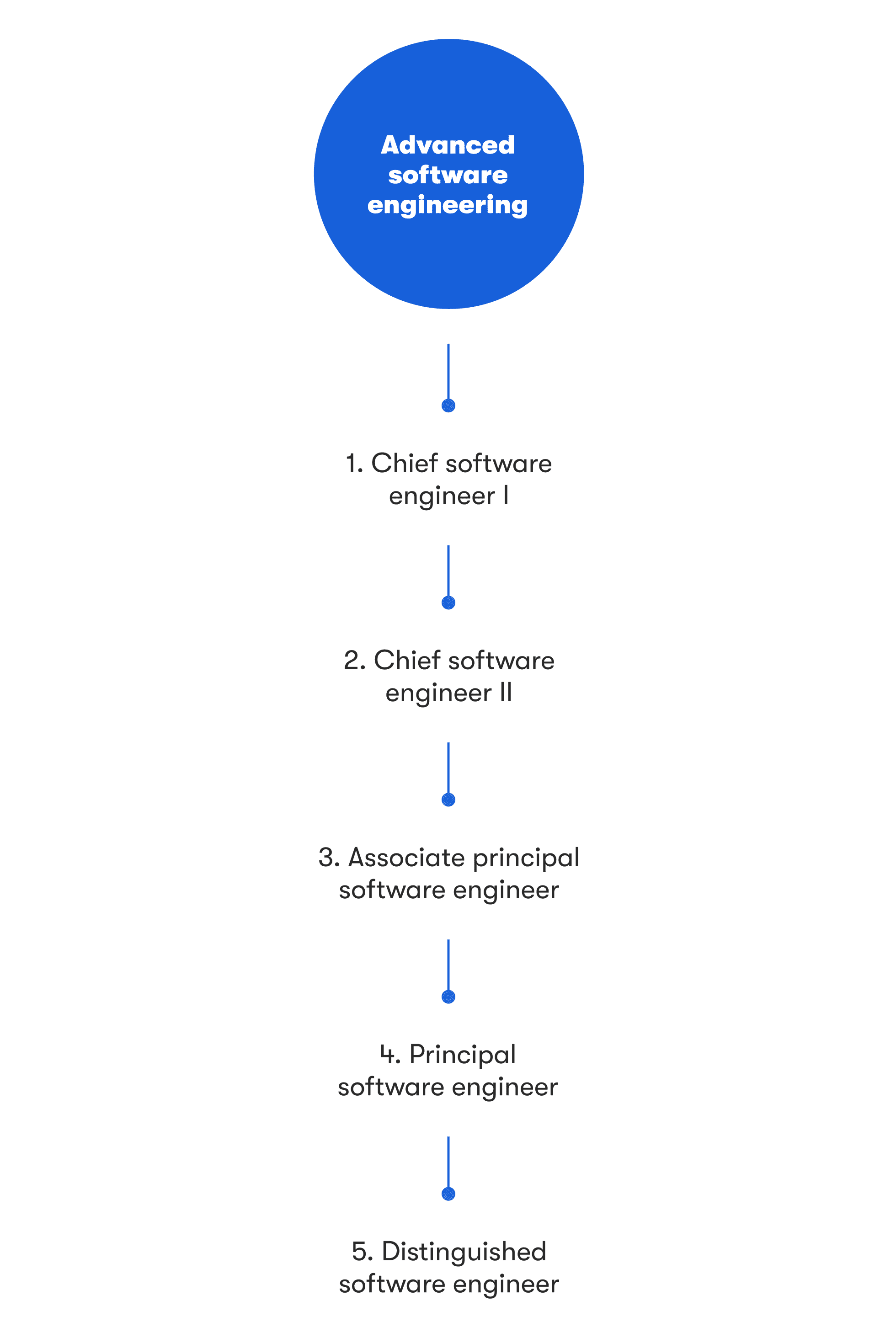
Chiefs typically oversee software engineering projects beyond what’s typically required of lead-level professionals, often having cross-stack development experience encompassing an array of programming languages, frameworks, and domains. Within each subsequent level, the degree of expertise — and responsibility — grows, and once a professional reaches the distinguished level, they’re often equipped to prepare for a transition into management.
The exact duties a software engineering professional takes on at each level vary by specialization and overall career path. Here’s a look at how the various careers often unfold.
Systems engineer
One of the software engineering career paths that is seeing ample growth is systems engineer. The number of systems engineer jobs is largely rising due to the popularity of cloud solutions and DevOps, both of which are common features of these positions.
Often, the core responsibilities involve infrastructure management, multi-cloud system design, system analysis, coding, testing, documentation creation, and similar duties. Additionally, a thorough understanding of DevOps, including continuous integration and maintenance, as well as related systems like Kubernetes, is generally essential.
The exact languages and systems professionals in this field need to know vary by position. However, some commonly needed skill areas include Python, AWS, Azure, SQL, Google Cloud Platform, Java, Ruby on Rails, and others of that nature.
The initial systems engineering career path involves five main levels: junior systems engineer, systems engineer, senior systems engineer, lead systems engineer, and chief systems engineer. Each represents growing responsibilities and expertise, with leadership skills entering the equation no later than the lead level.
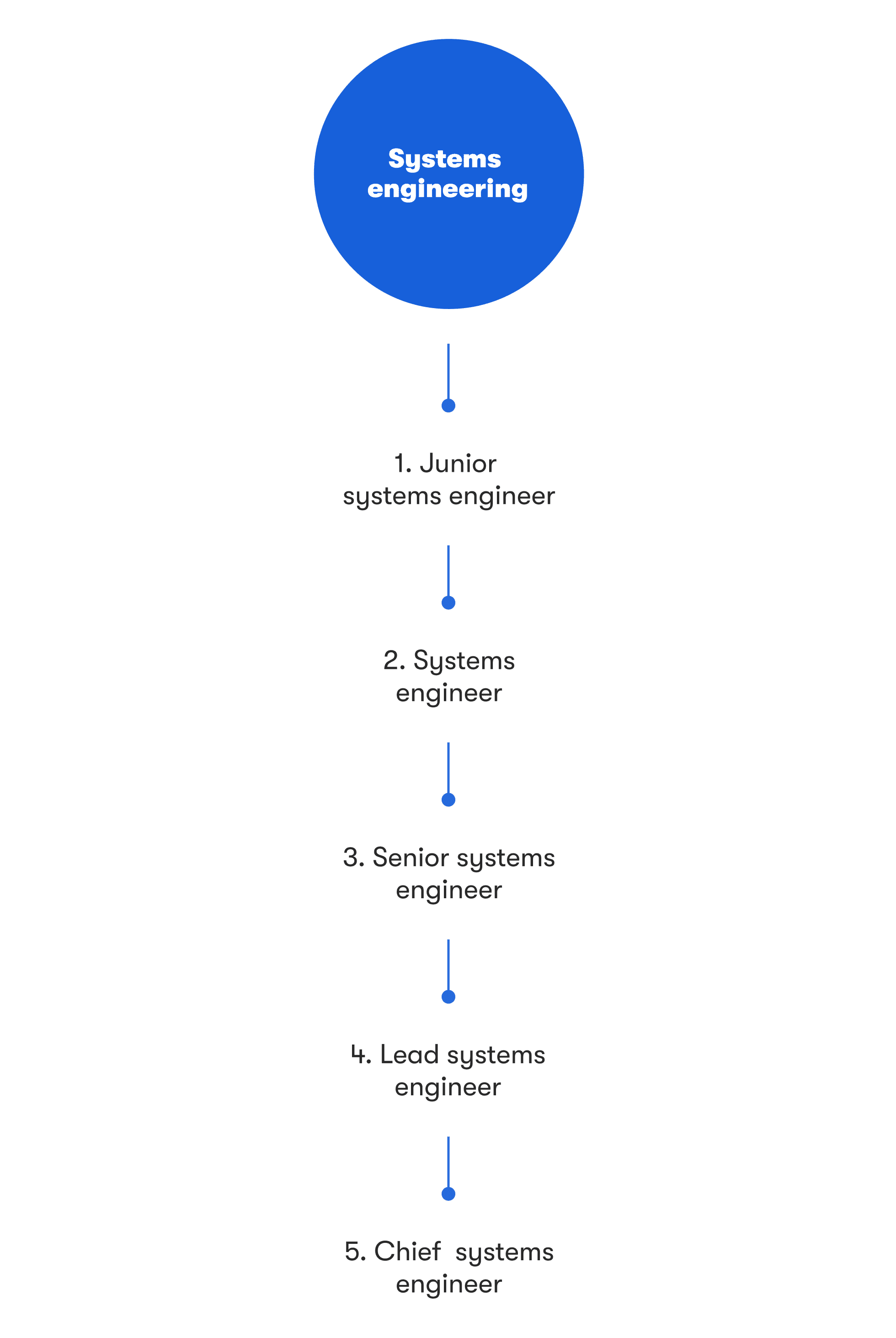
Additionally, the chief systems engineer job serves as a transition between the starting career ladder and its advanced counterpart.
As a systems engineer at EPAM Anywhere, you can choose your own approach of contributing to the project. Working remotely will also give you enough space and time to keep both your professional and personal life in check.

The advanced systems engineer path includes the following positions: chief systems engineer I, chief systems engineer II, associate principal systems engineer, principal systems engineer, and distinguished systems engineer. All of these roles qualify as leadership positions, as they typically oversee project teams.
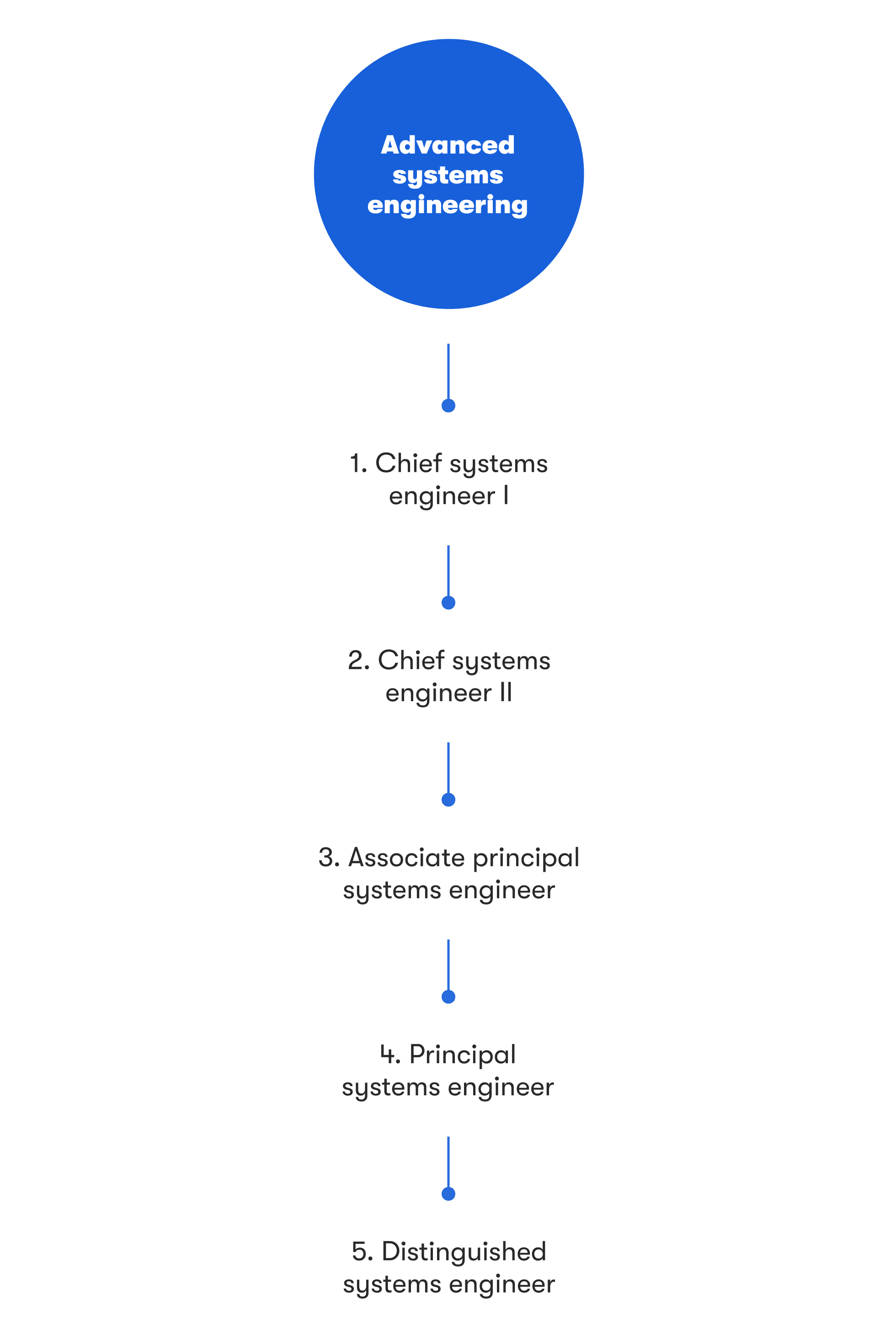
Solution architect
Solution architect jobs are another option for those exploring potential career paths for software engineering professionals. These specialists evaluate, design, and implement a range of IT solutions based on business needs. Often, the role is highly technical, requiring a broad knowledge base and specific capabilities.
If you’re wondering about how to become a solution architect, acquiring the right foundational skills is essential. Strategic thinking, timetable development, requirements gathering, problem-solving, solution design, automation, cloud architecture, infrastructure, scaling optimization, and technical design abilities are all commonly needed. Additionally, since these roles are more typical in enterprise-grade organizations, prior experience at enterprises is often a must.
As with other career paths for software engineers, the solution architect career path is broken up into phases. It begins with solution architect I, which is representative of the junior level. At the mid-level is solution architect II, which is followed by senior solution architect, the first role with a significant amount of autonomy. Finally, at the lead solution architect step, supervisory duties typically come into play.
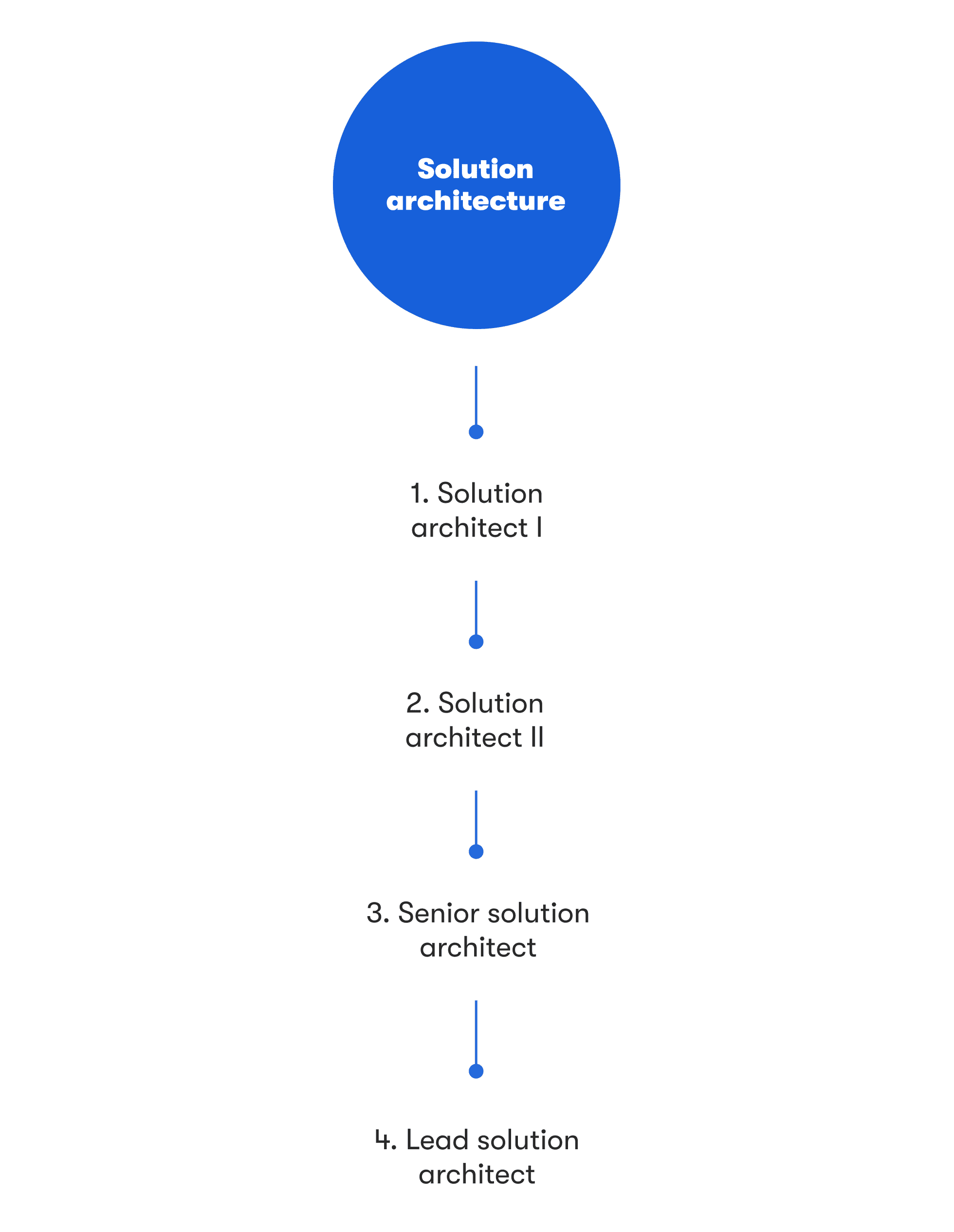
Software test automation engineer
Software test automation engineers specialize in automating testing processes to identify errors and reduce the amount of manual effort that’s required to develop new solutions. This allows developers to focus on creating and maintaining programs, streamlining the process, and shortening development timelines.
In automation testing engineer jobs, specific skills and knowledge areas are a must. Usually, the ability to define, design, and develop automated test cases is a core part of the role, as well as maintaining existing frameworks. Bug identification and reporting are similarly essential, as well as outlining steps for reproducing the issue. Troubleshooting and investigation skills are crucial, along with the ability to collaborate effectively with QA team members, developers, and managers.
Often, experience with Agile methodologies is a requirement for many software test automation jobs, regardless of the level. Similarly, coding skills in various languages are usually essential.
I’m about to have my assessment for a senior automation testing engineer level — just a couple of years after joining the company as a middle-level engineer. This is much quicker than anywhere else because you have all the necessary resources to fast-track your development. I still haven’t explored all of them!

As with other software engineering career paths, this option is divided into phases. It begins with junior software test automation engineer, allowing you to gain a strong foundation. That’s followed by the mid-level software test automation engineer, which transitions into the software test automation engineer position once you acquire ample experience. Beyond that lies supervisory roles, beginning with lead software test automation engineer and the subsequent chief software test automation engineer.
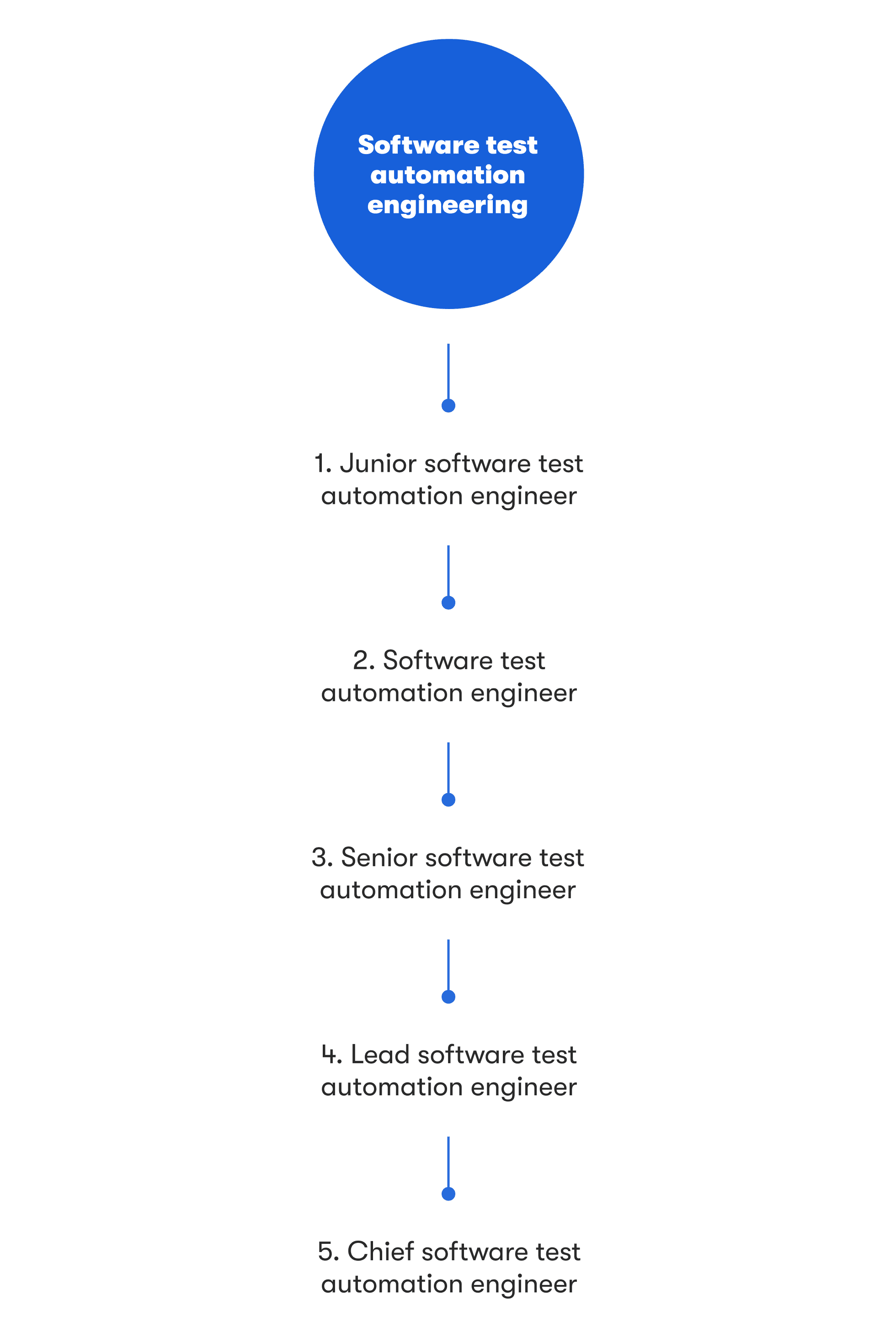
Project manager
Project manager is a somewhat unique role in the broader career path options for software engineers. These professionals are primarily responsible for planning and leading projects, making the position more administrative than some alternatives.
While working in project manager jobs, you typically have several key responsibilities. Budget design, timelines, requirements gathering, goal identification, delegation, progress tracking, and oversight are all parts of the equation. It’s also common to spend time on requirement analysis and ensure change management best practices are followed. Additionally, project managers often serve as liaisons, improving communication between cross-departmental teams while also being a conduit between the team and management.
Often, project managers also have prior experience in a technical area that relates to the project at hand. This can include a range of software engineering jobs, as well as those in allied fields. However, the foundation is typically technical, though some may shift into these roles from more business-oriented positions.
I want to develop within the project management track and EPAM Anywhere makes it possible. To some extent I have PM responsibilities on my current project but I want to take it further and for this I have clear career goals.

The career path of a project manager varies slightly from the norm. Usually, the initial position is project manager, which is followed by senior project manager. The latter may oversee a larger number of projects or more complex ones, depending on the exact position.
After that, you have the director of project management, then the senior director of project management. Often, these positions come with broader managerial functions, ensuring that project managers working for the company have the guidance they need to handle their responsibilities.
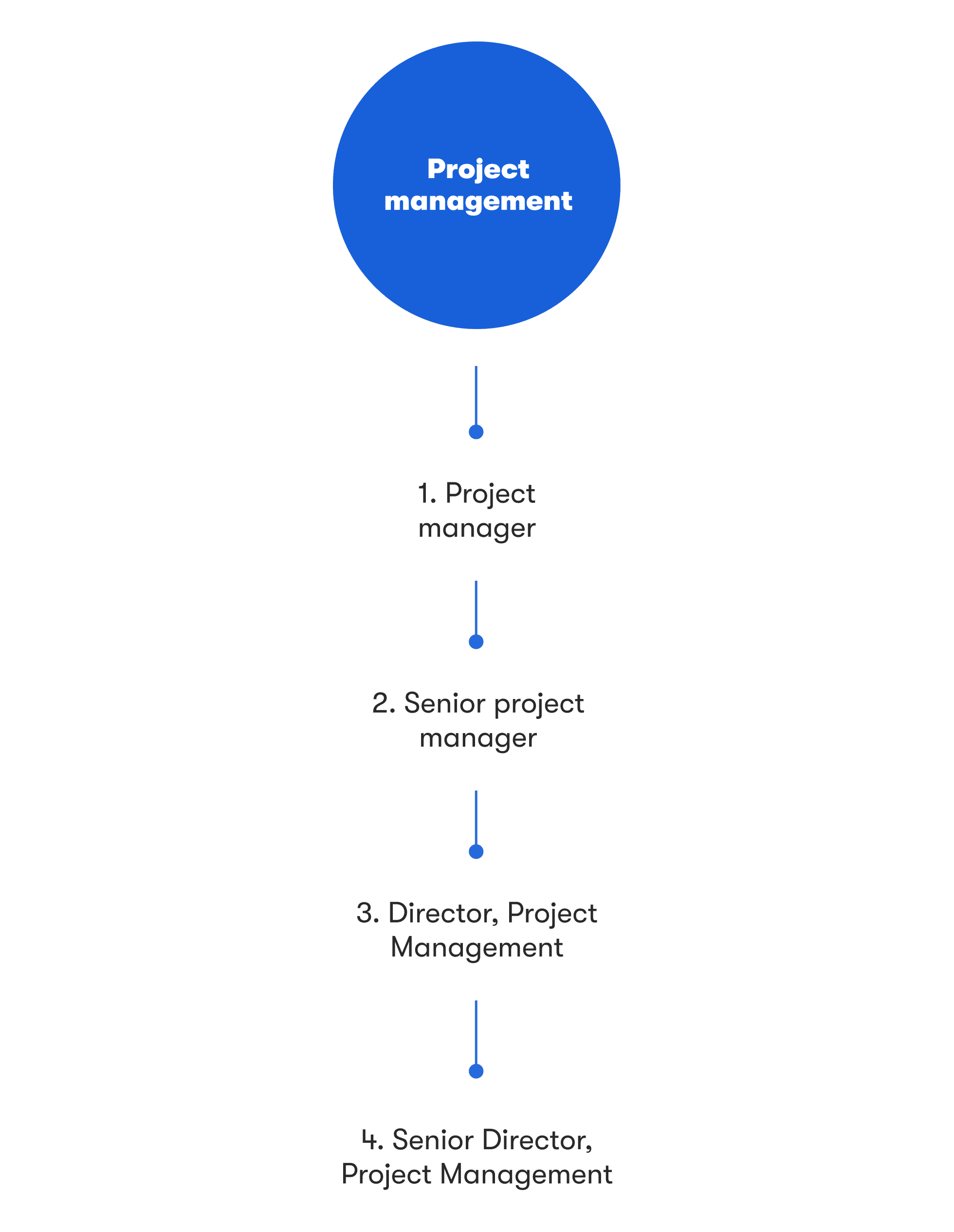
Engineering manager
As you move forward in your software engineering career, you generally have to choose between continuing on a technical track or shifting into management. When comparing the technical vs management career paths, technical roles mainly involve focusing on engineering skills and serving as an individual contributor long-term. Managers concentrate on team oversight, as well as strategy, planning, monitoring, and tracking responsibilities.
The software engineering manager position is more administrative than technical, though a strong understanding of the technical aspects of software engineering is a must. That allows you to design, develop, and guide projects, as well as effectively direct the work of others and delegate efficiently.
The engineering management career path actually includes several possible options, as those working in these positions may specialize in a particular type of engineering. For example, there are software engineering managers, systems engineering managers, and cloud engineering managers. In each of these cases, the engineering manager has specialized expertise relating to that niche, making them more effective at overseeing others in those specific fields.
However, the progression through those paths is similar. Generally, it starts with software engineering team leader, which is more supervisory than managerial. Next, it shifts up to software engineering manager, followed by senior software engineering manager.
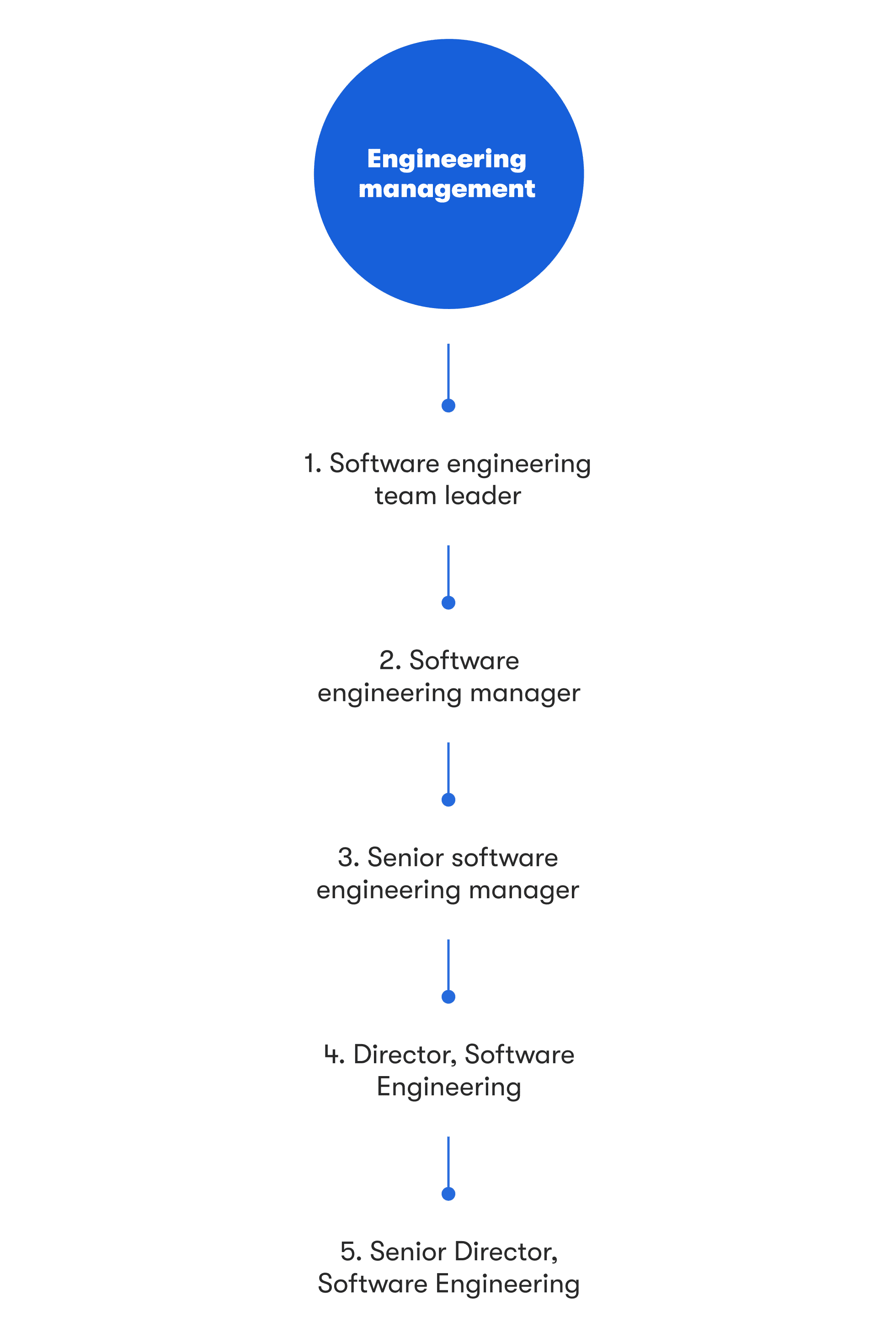
After that, you move into the director of software engineering role, which is succeeded by the senior director of software engineering position. When it comes to the difference between director vs manager, managers usually oversee junior- to senior-level individual contributors, while directors oversee managers.
Delivery manager
A role as a delivery manager is also somewhat unique in the broader array of career paths for software engineers. Their primary purpose is to oversee, coordinate, and manage the software development process to ensure successful software delivery.
In delivery manager jobs, some of the core duties include requirements identification, solution analysis, guideline creation, team oversight, feedback evaluation, change management, and budgetary tracking. Additionally, they serve as liaisons between cross-functional teams, management, and stakeholders.
On the skills side, delivery managers typically have a thorough understanding of project management software and development methodologies, such as Scrum, Agile, and DevOps. Familiarity with code management, continuous integration/delivery implementation (CI/CD), model view controller (MVC) design patterns, programming, and relational databases is also commonly a must.
As an upper-level position, the career path typically begins with delivery manager, transitioning into a senior delivery manager role after gaining experience. That’s followed by director of delivery management and senior director of delivery management, both of which typically oversee teams of delivery managers.
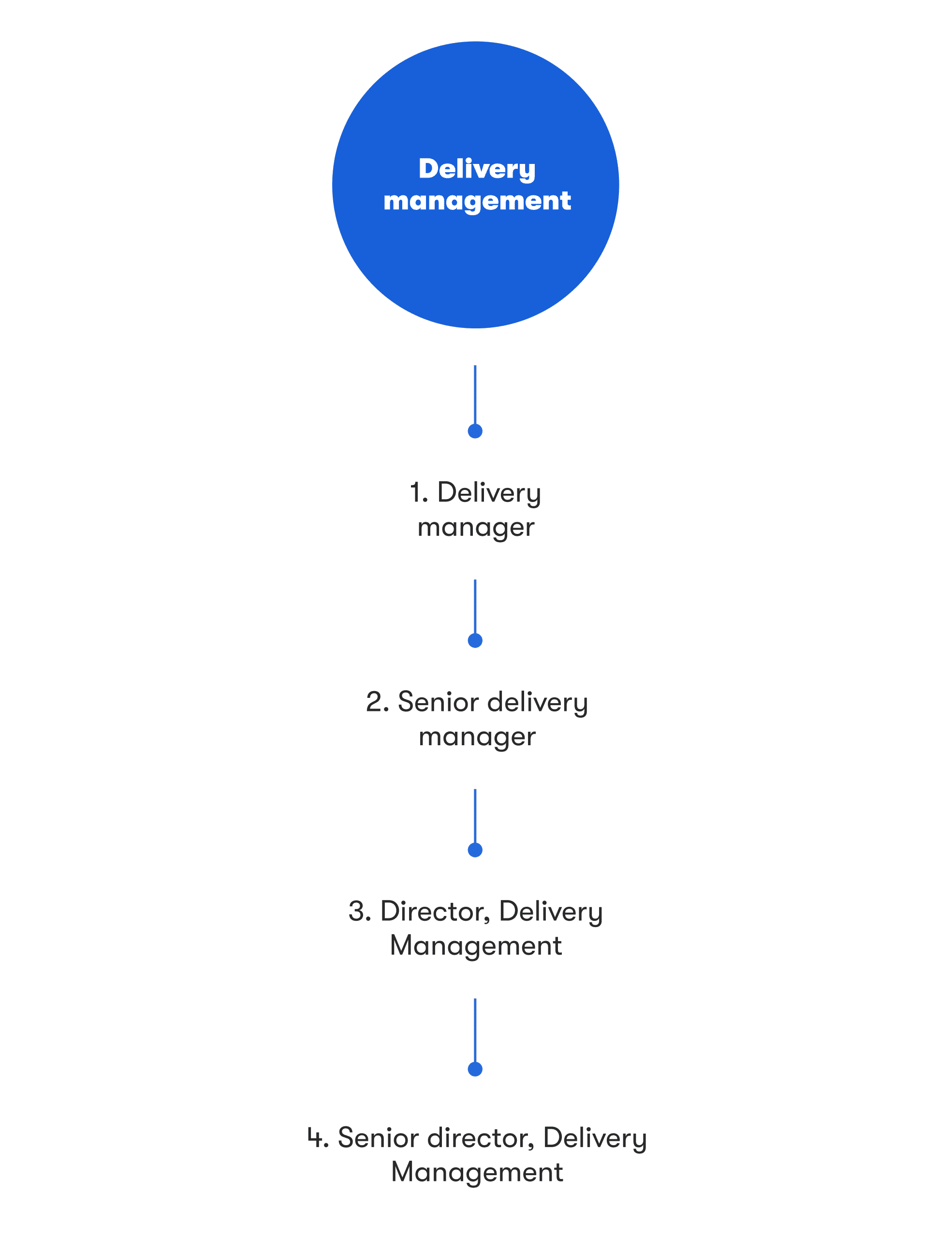
Technology consultant
Technology consultants are subject-matter experts who use their expertise to help organizations identify inefficiencies, prepare for successful implementations, and otherwise offer guidance designed to streamline deployments, maintenance, and more. While a significant amount of technical knowledge is required to provide sound advice, the roles focus on assisting companies with transformation, allowing them to achieve related goals.
In the world of software engineering, technology consultants typically have a career foundation in a specific software engineering niche. They use that to build the required level of expertise. Then, as they begin working as consultants, they rely on that knowledge to analyze existing solutions, identify areas for improvement, propose projects, develop plans, and more.
Overall, the technology consultant career path progresses a bit differently than many others. After transitioning into a technology consultant role, you can work up into the senior manager of technology consulting position, taking on more responsibilities. Next, you’ll find higher-level roles, including principal technology consultant and managing principal technology consultant, with the latter usually involving overseeing teams of technology consultants.
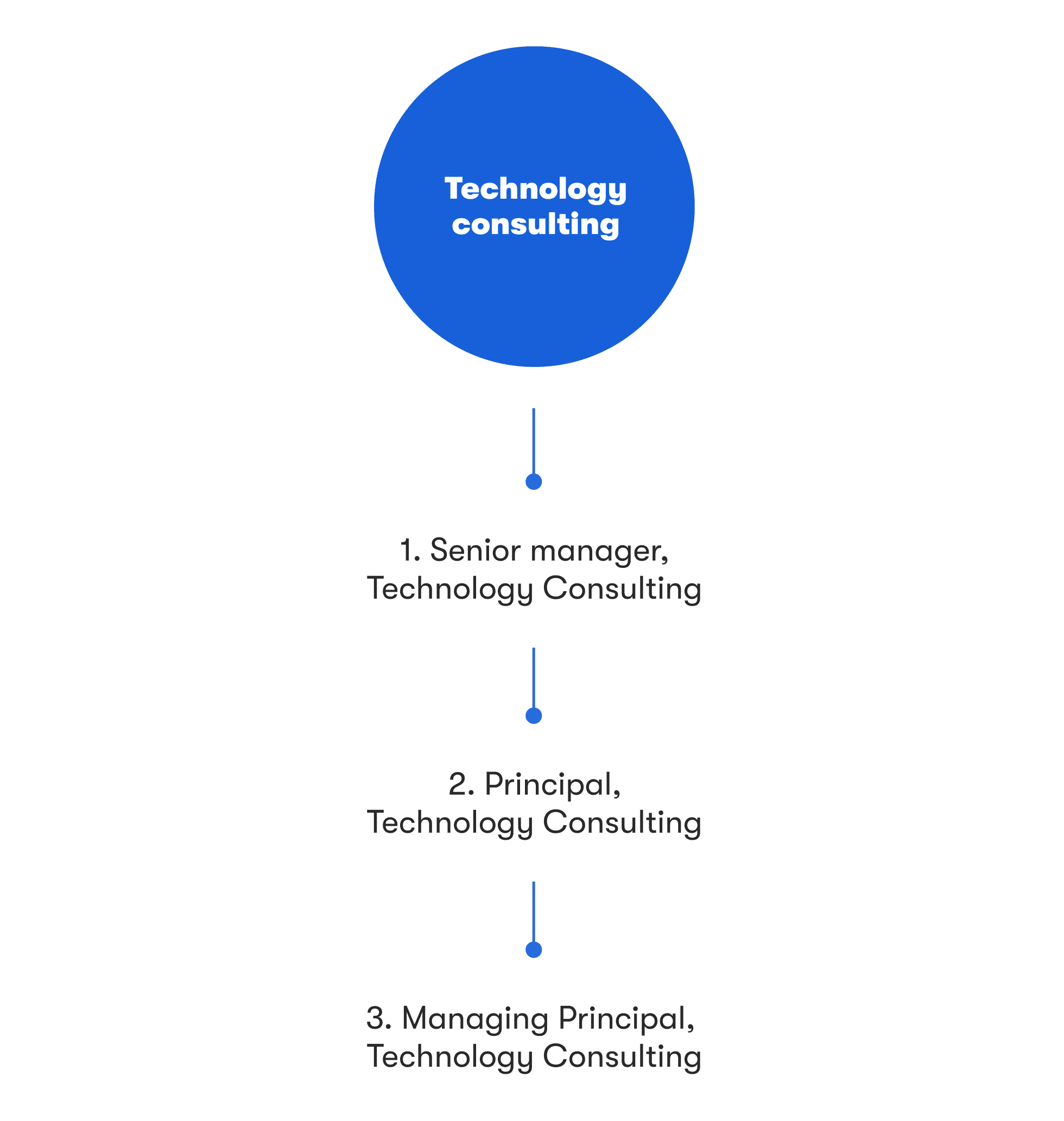
Chief technology officer
Functionally the top level of any technology career, the chief technology officer (CTO) oversees the technology needs, strategy, and current state for an entire company. They’re the primary leader of the whole technology department, developing broader strategy, identifying priorities, determining new solution needs, overseeing budgets, and supervising various department heads or managers.
While technical knowledge is a must — and the career path to CTO often begins by working in another technical role, such as a software engineering job — the position is highly administrative in nature and leadership-oriented. Communication, strategic thinking, morale management, organization, workforce motivation, and similar skill areas are crucial.
In many cases, it takes candidates around 15 years to secure the required experience and skills to transition into a CTO position. Additionally, following a management track over a technical career path is often a must, ensuring that you have the right leadership capabilities.
How to evolve your software engineer career
A career path for software engineers usually represents an evolution of their capabilities. Whether you want to secure your position as a technical expert or shift into a managerial role, it’s essential to take ownership of your journey if you want to secure offers for promotions in the future.
One of the most critical tips is to have an effective career development plan. That allows you to curate your ideal approach, making it easier to achieve your goals.
- Begin by identifying the path you’d like to follow. Assess where you are today professionally and compare that to the next step in your journey. Identify key skills and experience you need to acquire, giving you simple targets to pursue.
- Next, identify actions you can take and learning resources at your disposal, as well as any support you may need from your employer. Associate the acquisition of any required skills with a timeline as well, making it easier to plot your complete course.
- Then, discuss your career development plan with your manager. Express your desire to grow and provide the organization with more value. Discuss the responsibilities associated with the next position you want to secure, and see if they can provide support to help you get there.
Additionally, be proactive about your development, seizing opportunities outside of work to advance your skills. By coupling that with your manager’s sponsorship, you can often move forward far quicker than you’d expect.
Finally, repeat that process each time you advance after securing your footing in your new role and gaining sufficient skills and experience. That ensures you always have your sights set on the horizon, keeping you moving forward toward your ultimate goal.

As Chief Editor, Darya works with our top technical and career experts at EPAM Anywhere to share their insights with our global audience. With 12+ years in digital communications, she’s happy to help job seekers make the best of remote work opportunities and build a fulfilling career in tech.
As Chief Editor, Darya works with our top technical and career experts at EPAM Anywhere to share their insights with our global audience. With 12+ years in digital communications, she’s happy to help job seekers make the best of remote work opportunities and build a fulfilling career in tech.
Explore our Editorial Policy to learn more about our standards for content creation.
read more


















